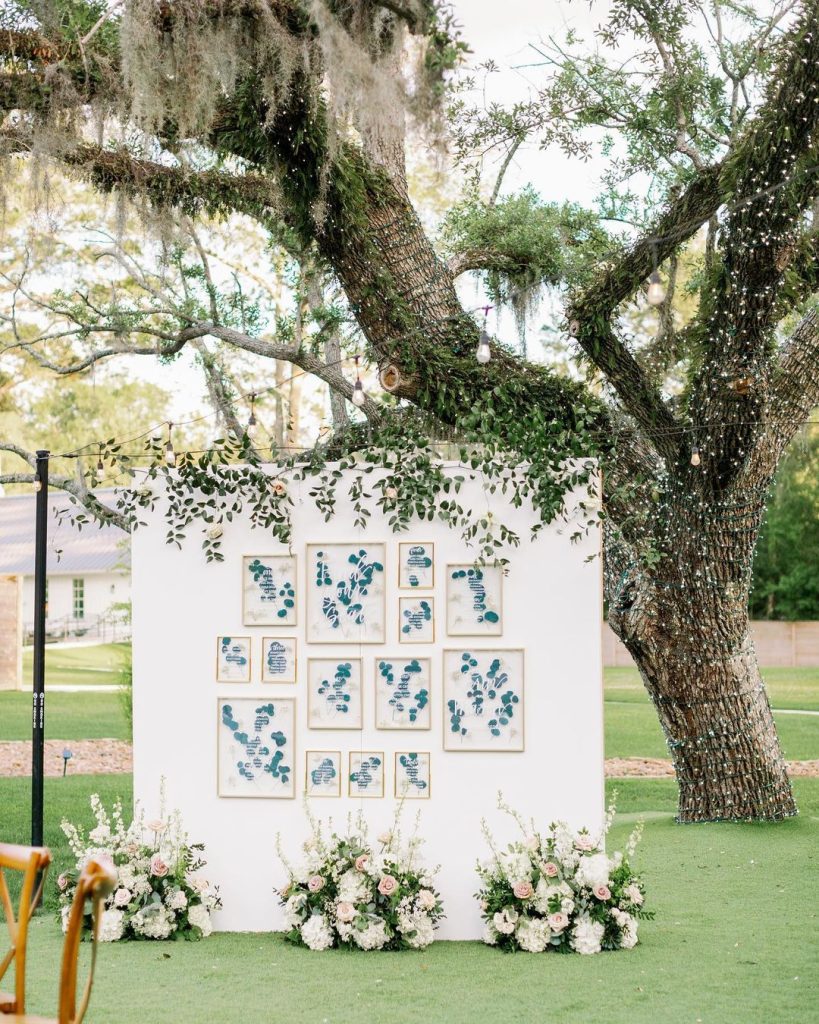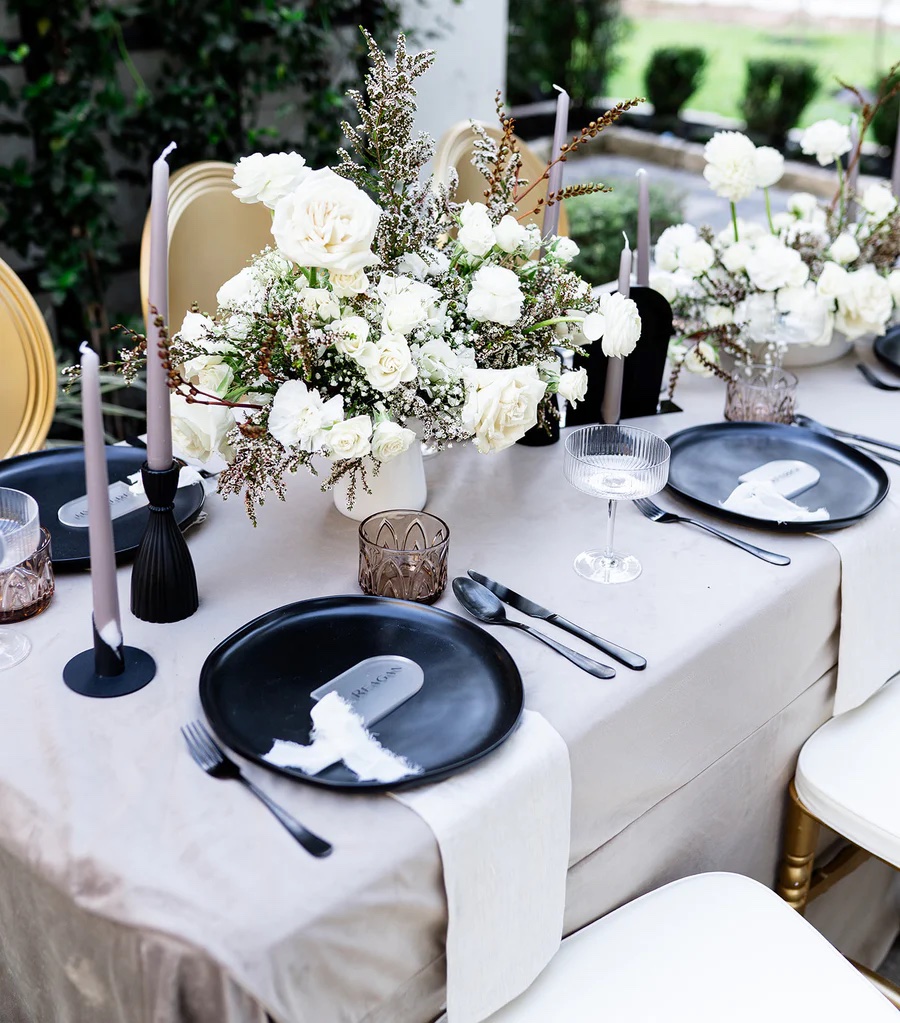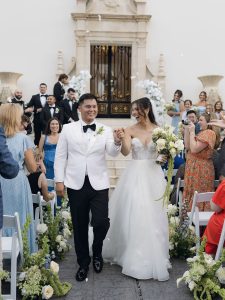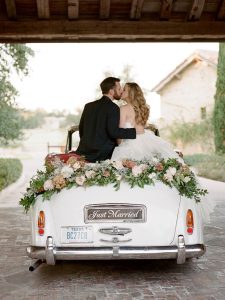It’s time to start planning your wedding seating chart. If you’ve seen any wedding planning movies, this comes across like an impossible task, but believe it or not, this can be fun! We’re going to help you break this down into bite-sized steps for how to make a seating chart for your wedding.
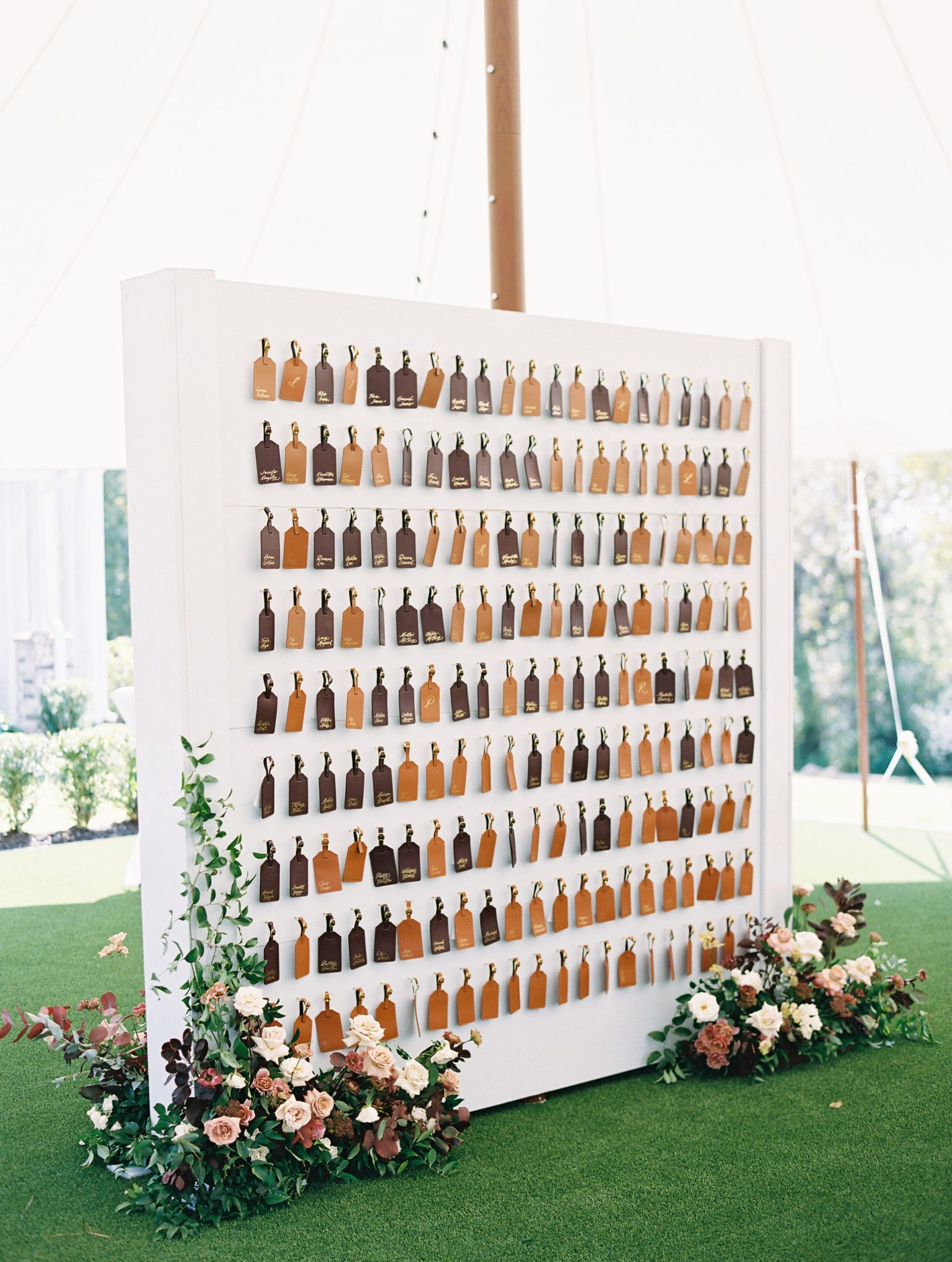
Photo // Courtney Leigh Photography
GETTING STARTED ON YOUR WEDDING SEATING CHART
Start planning at least a week before the big day.
Don’t wait until the last minute to plan where guests will sit. Keep in mind that part of this task will be done early in the planning process such as designing your reception space and selecting the type of tables and chairs you will be using.
Create a spreadsheet and organize your guests by their connection to you as a couple.
Maybe you aren’t a spreadsheet kind of person, but this can be a helpful step. In your spreadsheet, try to organize people by relationship. This will be helpful because the recommended way of organizing your seating chart is by grouping people groups together. (Example: college friends, high school friends, work colleagues, etc.) If there is another tactic that would help you visualize and organize your seating chart plan, try that instead.
Determine if you will be assigning specific seats or assigning a table.
Traditionally, if you have over 75 guests or decide to do a plated dinner, you should have assigned seating. A smaller group or buffet-style catering will do well with assigned tables.
Try to make people happy, but don’t expect to please everyone.
As you make the seating chart, try to make everyone happy verses create some template. Think about where they would have the most fun. However, in the long run, you have to realize that undoubtedly you can’t please everyone. Find a way to make peace with that.
When it comes to etiquette, there is no hard-fast rule that you have to abide by.
Focus on what is important to you. If you want people to feel like they’re at a big dinner table, find a way to make that happen. Don’t feel forced into a certain style if it doesn’t work for the type of wedding celebration you are trying to create.
HOW TO MAKE A SEATING CHART FOR YOUR WEDDING
Below is a simple step-by-step guide on how to make a seating chart for your wedding. If you are working with a wedding planner, they will be an invaluable resource when it comes to planning the layout and seating chart. Even if a planner, you will still need to take the lead on deciding where people go because you know about the relationships.
1. Get a floor plan from your wedding/reception venue.
First, it’s important to know what space you are working with. Your venue may have a predetermined place that entertainment and food needs to go for your size event, but you also may need to start the planning process from scratch.
2. Find out who is coming to your wedding.
Now that your RSVPs are in, it’s time to do a headcount for your seating chart. Don’t forget to include vendors as well as guests. What does that mean? Your seating chart should also take your catering, DJ/band and other important reception vendors into consideration.
3. Select your table sizes and shapes.
Now that you know your floor plan and the number of people coming, it’s time to decide on the sizes and shapes of your tables. This will vary based on the size of the wedding and the venue layout. Round table arrangements, rectangular dining tables, mix-and-match, serpentine and square table layouts are just a few of the most common types.
Keep your catering in mind when you plan your seating arrangements.
4. Determine the number of tables that you will need.
Based on the type of table shape, size and reception design that you prefer, divide the number of guests attending (not including your wedding party) by the number of people you can seat at each table. Be aware of comfortable seating arrangements. Don’t try to squeeze too many people at one table.
5. Place yourself on the seating chart first.
Part of this process will be to determine if you will be sitting at the head table with your wedding party or at your own sweetheart table.
6. Next, seat your wedding party, parents and family. (These are you VIPs)
Will you have them all at a traditional head table or try something different? A traditional head table is usually a rectangular table facing the rest of the reception area, but you can get creative with it. And you can also allow the party to sit with friend groups. This is something your wedding planner can help you tackle as well. Remember that these are your VIPs and you want to make sure you’ve thought about where they will be most comfortable as well as accessible to participate in their wedding activities.
Then, determine where you would like to seat your parents. If your parents are divorced or there are tensions between different sets, there are several possible solutions to make sure everyone is as comfortable as possible.
Traditionally, your parents, your partner’s parents, along with grandparents, and siblings along with their partners/spouses are seated at the same table. The officiant is often seated at this table with their partner/spouse as well.
7. Ask for help from your parents and future in-laws to help you seat their friends and their side of the family.
When it comes to extended relatives on both sides and friends of the family, it’s best to enlist the support of both sets of parents. If you are nervous about bringing them in on the process, keep your requests specific and/or give them some options to choose from.
8. Decide whether you’ll assign specific seats or tables for the rest of your guests.
Remember to use the guide from earlier in this post to determine what is best for your size and style of reception.
9. Create guest seats or table assignments by organizing them in related groups.
Group your guests by interest, familiarity and how they are connected to you as a couple.
This isn’t about playing favorites, but a wedding is not always the time to get people out of their comfort zone. You want them to enjoy themselves, so work to seat people together with people that they know and already enjoy. Plus, your wedding could serve as a reunion for people who haven’t seen each other in a while — think college or high school friends.
If you try to force people to sit and create new friendships, they might or you might end up with a bunch of empty seats because they are naturally grouping together with those they are familiar with.
If your ring bearer and flower girl are young children and you have more children coming to the event, consider having a kids table. If they are the only set of children, seat them by their parents.
10. Map your seating chart out digitally and/or put pen to paper.
Both of these options can be helpful. If you’re working with a planner, they will likely be able to generate a digital layout for you. If you aren’t working with a full planner, you can also use third-party services such as AllSeated and many more.
Remember that this will need to be editable, as it will likely change several times before it is finalized and you will need to be able to communicate with the vendor creating your visual seating chart signage for the wedding day.
11. Check and double-check your seating chart before finalizing it.
Look over your seating chart with your significant other, have your parents look at it, have a trusted member of your wedding party review it, and have your wedding planner review it again (if they haven’t already). This is to make sure that in moving things around two people haven’t been sat next to each other who shouldn’t be — or someone was forgotten altogether.
Talk to your planner about how to deal with unexpected guests both in seating as well as in signage on the day-of.
12. Create the plan for your day-of seating guide and signage.
Everything has been reviewed, and now it’s time to start getting the signage ready. Enlist the help of our wedding pros: AALVO, Magnolia Designed, Casa Creative, Luna Designs, just to name a few. Check out our full list of Decor + Rental vendors here. You will want a visual seating chart for guests and they are the experts to help you bring your vision to life!
PRO-TIPS FOR MAKING YOUR SEATING CHART
- If you go with a kids table (an earlier recommendation), consider doing an activity bag with a few small play items such as crayons and an activity book as well as some candy. Be sure it’s age-appropriate.
- Forego the single tables. That’s an outmoded tradition. If you want your single friends to mingle, make it a point to introduce them to each other at the reception. Otherwise, set them up on a blind date. Your wedding seating chart isn’t the best place to start matchmaking.
- Put younger people close to the dance floor.
- Leave additional room for wheelchairs or other assistive devices to maneuver.
- It bears repeating — do try to make people happy, but realize that you can’t please everyone.
You’re practically an expert at how to make a seating chart for your wedding now. And remember, no rules of etiquette should trump comfort and function. Feel free to think outside the box and enjoy this part of the wedding planning process.
Happy Planning!
Are you ready to start finding vendors that can help you plan your wedding? Check out our local vendor resources here.


























































